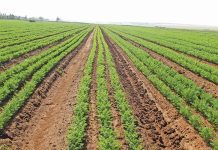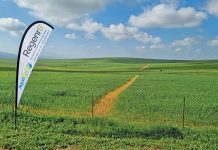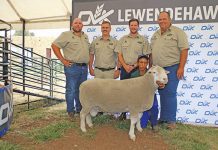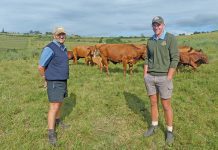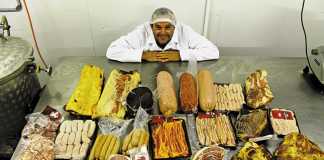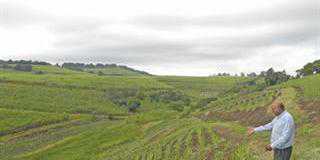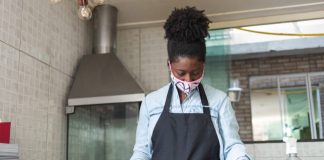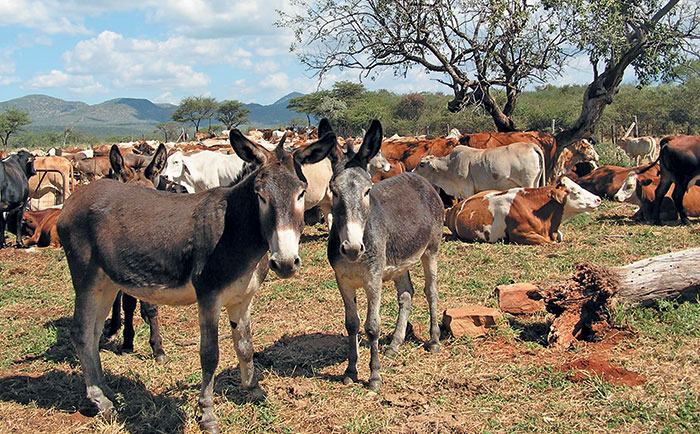
Photo: Glenneis Kriel
There is an old African saying that goes: “A woman without a donkey is a donkey herself”. This refers, of course, to the large number of rural women on the continent who are dependent on donkeys for transportation.
READ How to keep a donkey healthy
Over the past three years, however, donkeys have garnered renewed interest in Africa for another reason: growing demand for their hides, meat and milk.
According to international animal welfare and rescue charity, The Donkey Sanctuary, donkey hides are used in a Chinese medicine called ejiao. The hides are boiled to produce a firm gel, which is dissolved in hot water or alcohol and used in food, drink and beauty products.
Ejiao is believed to have a wide range of health benefits, such as reducing signs of ageing, improving blood circulation and low blood cell counts, and assisting with reproductive problems.
Earlier last year, it emerged in The Donkey Sanctuary’s ‘Under the skin’ report that 1kg of this medicine can sell for up to £300 (about R5 600).
According to the report, China’s growing middle class is driving the demand for ejiao, resulting in approximately 1,8 million hides being traded worldwide each year.
There is, nevertheless, a considerable shortfall in supply, as demand is estimated at between four million and 10 million hides per year.
The largest manufacturer of the medicine, Dong-E-E-Jiao, reportedly employs more than 10 000 people and processes more than one million donkey hides a year.
As a result, donkey numbers in China have almost halved, from 11 million in 1990 to about six million in 2014. This, in turn, has fuelled imports from elsewhere, with trade currently being legalised in various countries, including
North West and China Trade Agreement
In South Africa, it is legal to trade and export donkey meat and hides, provided the animals are slaughtered at a registered equine abattoir. The number of hides that may be exported is restricted to 7 300 a year, however, and the animals have to be treated humanely.
After a trade delegation from the North West legislature visited China last year, it was concluded that donkey production could be a means of accelerating rural development in the province.
According to Leteane, infrastructure and systems are currently being put in place to ensure the sustainability of the industry, and a trade agreement with Chinese authorities is due to be formalised late next year.
Communal land about 100km from Mahikeng has been made available for the establishment of a feedlot.
In addition, Dr Langa Madyibi, director of veterinary services in North West, has visited animal welfare organisations and horse exporters in the Western Cape as part of the groundwork to establishing a viable industry for donkey meat and other products.
According to Leteane, certain trade barriers are due to be addressed by national government.
“For example, there’s the restriction on the number of hides that may be exported each year, while there are also phytosanitary barriers, especially with regard to African horse sickness, that could jeopardise trade with China.”
Before the trade agreement is formalised, prospective producers will receive comprehensive training, including management, animal welfare, dietary requirements and health care, on sustainable donkey production.
“We recently ran an advertisement inviting small-scale farmers interested in donkey production to register and take part in a training programme.
“A few commercial donkey farmers in the province have approached us because they also wanted to be part of the project, but they’ll have to wait until we [have accommodated] the communal farmers,” says Leteane.
According to Hoffman, the efficiency of donkey production is unlikely to be as good as for cattle and sheep, which have been selected for meat production over a long period.
However, in some countries where production has been legalised, the number of donkeys and horses bred for meat production is growing considerably faster than that of horses bred for racing, for example.
“As with any livestock commodity, if it’s done scientifically in a free- market environment, there could definitely be a niche market,” he says.
Leteane acknowledges that donkey breeding has its challenges, but plans are being made to overcome these.
“We realise the quality of the donkeys in the province is generally poor, so we’re trying to source new genetic material to improve this.
“In addition, we’re establishing feeding and health management regimes to ensure we unlock the full genetic potential of the animals,” he says.
It was envisaged that producers would keep the donkeys on marginal land, while retaining more productive land for cattle production.
Grazing would then be supplemented with inexpensive feed mixes. Animals destined for the meat and hide markets would be finished off at the communal feedlot that is being planned.
A change in emphasis from hides to meat
Initially, the focus was on the export of hides, but the focus has since shifted to meat and milk production, adds Leteane.
“We’re aware of how the [hide] market is reducing stock numbers in other parts of the world where the donkey trade has become formalised, so we’re putting measures in place to prevent the same thing from happening here in South Africa,” he says.
He stresses, however, that the administration’s intentions are good, and that by formalising the industry, the provincial government was hoping to “breathe new life” into poor rural communities and put an end to the illegal trade in, and abuse of, donkeys.
An industry clouded by controversy
North West government’s plans to establish a donkey production industry have been met with resistance in some quarters.
Boeta du Toit, CEO of Agri North West, says that as far as he knows, “no business plan has been developed or studies been done to estimate the economic feasibility of the province’s plans”.
He also expresses concern that donkeys are highly destructive grazers as they tend to uproot the entire plant when they graze. Stocking densities for donkeys are therefore significantly lower than for cattle and sheep.
Du Toit questions the intended plans for meat sales and consumption. “It feels to me as if not enough thought has been put into this plan,” he says.
Responding to questions from Farmer’s Weekly, Alex Mayers, head of programmes at The Donkey Sanctuary in the UK, says there is “a risky paradox in the concept of donkey production”, as donkeys suffer easily from stress. This is caused when bonded pairs are split up, as well as other factors.
“Stress can result in higher abortion rates and lead to conditions such as hyperlipaemia, where they stop eating,” he explains.
“This results in a negative energy balance and too much stored fat being released into the bloodstream. Hyperlipaemia has been found to lead to mortality rates of between 60% and 90%, even with the very best care.”
Low fertility rate
He adds that donkeys have a low reproduction rate, due to high spontaneous abortion and foal loss rates, poor artificial insemination success rates, and low fertility rates. Moreover, fillies can take up to two years to be ready to breed.
READ Animal health: what German vets can teach us
Mayers is also concerned about the water and feeding requirements of donkeys.
“In the UK, donkeys require 25ℓ to 35ℓ of fresh water per day, and this figure is likely to be higher in South Africa where it’s warmer. Where’s that water going to come from? The Namibian Slaughter Association has said that slaughtering each donkey uses 2 500ℓ of water. And what about the fodder or supplemented feed for the donkeys?”
Mayers adds that a very large breeding stock would be required to meet even a fraction of the current industry demands of four million to 10 million donkey hides per year, even if all these other challenges could be overcome.
Hides are by far the most valuable donkey-derived product, which means that the meat has relatively low value.
“This has led to illegal practices, such as starving and dehydrating donkeys. Poor welfare is actually incentivised, as a donkey that dies of hyperlipaemia in transport saves the job and costs of slaughtering at the abattoir.”
According to Mayers, the meat export market is not worthwhile as it is very limited.
The Donkey Sanctuary also does not advocate milk production as it is difficult to ensure the donkeys’ welfare Jessie Christelis, co-owner of The Donkey Dairy in Gauteng, says that the North West legislature’s idea is “noble” and formalising the trade would “definitely help curb illegal trading”.
However, he doubted that the problem would disappear entirely.
READ Farm security: crucial tips to improve safety
By formalising the trade, production standards could be established from the farm to the abattoir to ensure that the animals were treated humanely.
“For example, hides could be graded so that people could be financially rewarded for the quality of the hides, which is generally also a good indication of how an animal was treated.”
Nevertheless, Christelis believes that the idea is extremely ambitious and that the Chinese market might not be able to pay enough for the hides or meat to render production financially viable.
According to Christelis, milk production is complicated by the fact that a jenny produces a foal only every second year, and that for the first two months after birth, all the milk has to go to the foal.
This means that jennies can be milked for only four months.
“We milk four times a week and take only 500mℓ at a time. If the jennies or foals look as if they might be losing condition, we stop milking to help them regain condition,” he says.
Christelis concurred that donkeys form strong bonds and breaking up pairs can result in a donkey falling into depression for months, during which time it loses body condition.
“If you want to farm donkeys, you need to have a passion for them. They’re not like cows or sheep. They need to be treated extremely gently,” he explains.
As formal donkey production does not exist in the Southern African Development Community, the surge in demand for hides has resulted in donkeys being sourced from rural communities where the trade helps support families.
This has placed pressure on water resources, Mayers says.
“Because donkeys breed so slowly, we believe populations are falling quickly,” he adds.
After legalising the trade, some countries, such as Burkino Faso, have now banned it due to the negative impact on donkey numbers, according to the ‘Under the skin’ report.
In Southern Africa, trade has been associated with a spike in donkey thefts, severe animal welfare abuses and illegal slaughtering. In one case earlier in 2017, the SA Police Service seized 2 921 donkey hides at a value of R4 381 500 in Benoni; the hides were destined for China.
“It seems as if the trade has gone a little more underground, with some traders even lying low, due to the traders that were convicted earlier this year,” she says.
Email Patrick Leteane at [email protected], or Jessie Christelis at [email protected].

